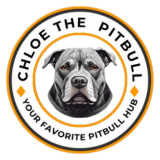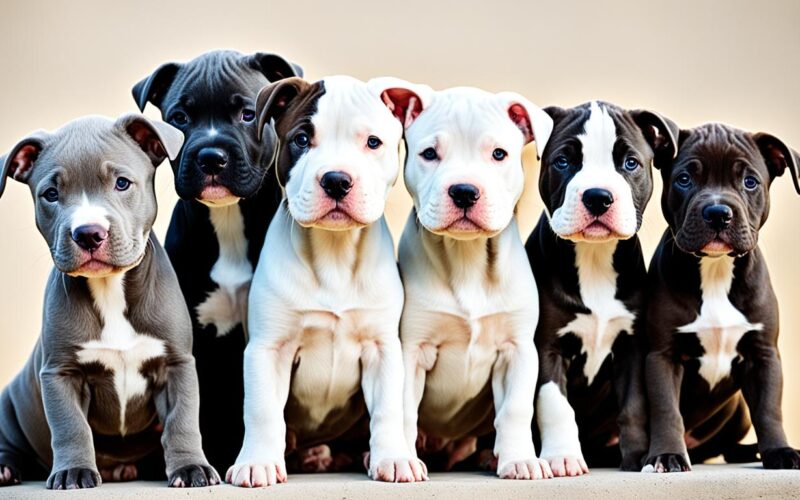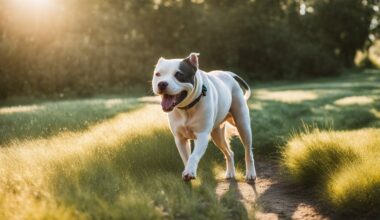Ever wondered if your Pitbull puppy’s coat color will stay the same as they grow up? Have you noticed their fur getting darker or lighter and questioned if it’s normal for your pitbull puppies coat color to change?
You’re not alone—many Pitbull owners experience these changes and want to understand why they happen.
Did you also know that black, blue, brindle, and fawn are the most common Pit Bull colors? White Pit Bulls are less common but not rare.
We’ll explore the journey of how Pit Bull puppies coat colors change as they grow and what factors influence these changes.
Pit bulls have striking and diverse coats, often featuring white, black, blue, or brindle patches. The coat color doesn’t tell you about their temperament.
Temperament comes from genetics, upbringing, training, and socialization. As your Pit Bull grows, you might see changes in their coat color, texture, and pattern.
Understanding Puppy Coat Evolution
Studies suggest that dog coat colors have ancient origins dating back millions of years and have been shaped by natural selection processes. Dog fur diversity is governed by a few genes and that coat patterns may have emerged before varying dog breeds diverged.
These studies attests to the fact that puppies can change their fur as they grow, and this is no different for pitbull puppies coat color.
This information can provide valuable insights into the evolution of coat colors in dogs, including pit bull puppies, and how genetics play a role in determining their coat colors throughout their lives.
Puppies go through a big change as they grow, as you might have guessed what I am going to say, this is no differnt for pitbull puppies coat color.
They start with a soft, downy coat that’s very different from their adult fur. This coat is delicate and less dense than the thick hairs that come later.
Puppy Coats vs. Adult Coats
The evolving nature of a puppy’s coat colors may be influenced by a combination of genetic factors inherited from their ancestors and developmental changes as they mature.
As dogs get older, their coat changes from puppy to adult fur. Some puppies shed their soft coat before new adult hairs grow. Others keep their puppy coat but get adult hairs too. This is when you might see changes in pitbull coat color and fur pigmentation.
Transition from Puppy to Adult Fur
As puppies grow, their fur changes. The process of pitbull coat pigment maturation happens, and the dog’s coat color may change. Adult hairs replace the puppy coat, changing how the dog looks. Sometimes, this can make the coat look duller and less shiny as the dog gets older.
Knowing how a dog’s coat changes can help owners understand their pet better. By accepting these changes, pet owners can see the unique beauty and traits of their pitbulls.
Breeds with Dramatic Color Transformations
Some dog breeds change their coat colors dramatically as they grow from puppies to adults. The American Kennel Club points out breeds like Dalmatians, Bedlington Terriers, Kerry Blue Terriers, and Shih Tzus. These dogs can switch from dark to light coats or the other way during their growth.
Dalmatians and Bedlington Terriers
Dalmatians are famous for their color changes. They are born white and get their spots as they get older. Bedlington Terriers start with a dark, curly coat. It turns into a lighter, smoother fur as they grow up.
Kerry Blue Terriers and Shih Tzus
Kerry Blue Terriers change color too. They are born with a dark coat that turns to a blue-gray color as they age. Shih Tzus also see big color changes. They start with a dark coat that lightens to a softer tone.
These color changes come from genetics, physiology, and the environment. Learning about these changes helps us understand dog coat colors better.

Factors Affecting Coat Color Changes
The color change in a pitbull puppies coat color depends a lot on its genes and breed traits. Some breeds change color more than others. For instance, a yellow Lab puppy won’t turn into a chocolate Lab. Sites like Paw Print Genetics can show how a puppy’s coat might change based on its parents’ genes.
Genetics and Breed Characteristics
Dogs’ fur color comes from two main pigments: eumelanin and pheomelanin. These are set by the dog’s DNA. Light fur often gets richer as the dog grows up, showing its true color. Sunlight can make white fur or certain coat marks lighter.
Age, hormone changes, sun exposure, and shedding can change a puppy’s coat color. Graying fur is common in dogs, especially around the muzzle in breeds like Poodles and German Shepherds as they get older.
Changes in fur color can mean health issues like itching, scratching, hair loss, skin rash, or a dull coat. Hypothyroidism, a thyroid problem, can make fur thin and change its color. Cushing’s Disease, a hormonal disorder, can cause patchy fur or unusual color changes.
Seeing a vet regularly is key to spotting fur changes early. A good diet and grooming help skin and coat health. But, they can’t stop fur color changes. Using sunscreen for dogs in the sun and coats or sweaters in the cold can protect against skin problems.
do pitbull puppies coat change color
Pitbull puppies can change their coat color as they grow from puppies to adult dogs. These changes are mainly due to their genes and breed. Some breeds change more color than others.
Owners say Pitbull puppies can change coat colors as they get older. Some pit bulls turn from blue to brown around 9 months old. Others see a change from a puppy coat to an adult coat, showing a color shift over time.
One owner called their pit bull a “blue seal,” showing how coat color can change with the light. Another said their pit bull’s coat turned almost chocolate-like as it got older.
Genetics are key in the coat color changes of Pitbull puppies. The original black coat can turn into different colors like silver, blue, red, and seal as they age. These changes come from complex genetics, like the mix of genes and specific traits.
Pitbull puppies usually reach full growth by two years old. During this time, they might see changes in their coat, like thicker or more vibrant fur. They might also see color changes.
Knowing about the genetic and breed factors behind coat color changes in Pitbull puppies helps owners appreciate their unique nature. By understanding these changes, Pitbull owners can look forward to seeing how their pets will look as they grow.
Maintaining a Healthy Coat
Keeping your pitbull’s coat healthy is key, no matter the color changes it may go through. A healthy coat is shiny, soft, and free from dandruff, bald spots, or too much oil. As a pitbull owner, you can help by feeding it well and taking it to the vet regularly.
The Role of Diet and Veterinary Care
Your pitbull’s coat reflects its overall health. Dogs that don’t get enough nutrients often have dull, dry coats and shed a lot. But, a diet rich in protein and essential fats like Omega-3 and Omega-6 can help. Adding fish, fish oil, or flaxseed oil to their food can be very beneficial.
It’s also important to take your pitbull to the vet regularly. This helps catch and treat any health problems that might affect their coat health. Issues like too much shedding, dandruff, or greasiness could mean something serious. Your vet can figure out what’s wrong and help fix it, keeping your pitbull’s coat care and fur maintenance in good shape.
By eating well and seeing the vet often, you can keep your pitbull’s coat looking great. It will stay shiny, soft, and healthy, without any major health problems.
Recognizing Coat Health Issues
As a pit bull owner, pay attention to changes in your pup’s coat color and overall health. A healthy pit bull coat is shiny, soft, and free of issues like dandruff, bald spots, or too much oil. These signs can mean there are health problems that need attention.
Excessive shedding is a common issue in pit bulls. But, losing too much hair can mean allergies, hormonal issues, or not getting enough nutrients. Look for bare skin or lots of loose fur. If you see these, talk to your vet.
A dull, dry, or coarse coat can also be a problem. It might come from a bad diet, not grooming enough, or health issues like thyroid problems or skin infections. Fixing the cause with diet, supplements, or vet care can make your pit bull’s coat healthy again.
Coats that are too oily can be a sign of a problem too. Some pitbulls naturally have oily coats, but too much oil can mean skin issues or infections. A vet can find out why and treat it.

Watching for changes or problems in your pitbull’s coat can help you catch health issues early. Keep your pitbull healthy with good food, regular grooming, and vet visits. This way, your pitbull’s coat will stay in great shape all their life.
Conclusion
Pitbull puppies can change their coat color as they grow into adult dogs. These changes come from both genes and breed traits. Some breeds, like Dalmatians and Bedlington Terriers, show big color changes. Others, like Kerry Blue Terriers and Shih Tzus, may see smaller changes.
Keeping your pitbull’s coat healthy is important, even if it changes. A good diet, regular vet visits, and watching for any problems can keep their coat looking great. Understanding how their coat changes can make you appreciate your dog more.
Whether your pitbull’s coat changes a lot or a little, caring for them is key. Providing the best care helps their overall health and keeps their coat looking good. By being informed and proactive, you can help your pitbull have a happy and healthy life with great fur.


